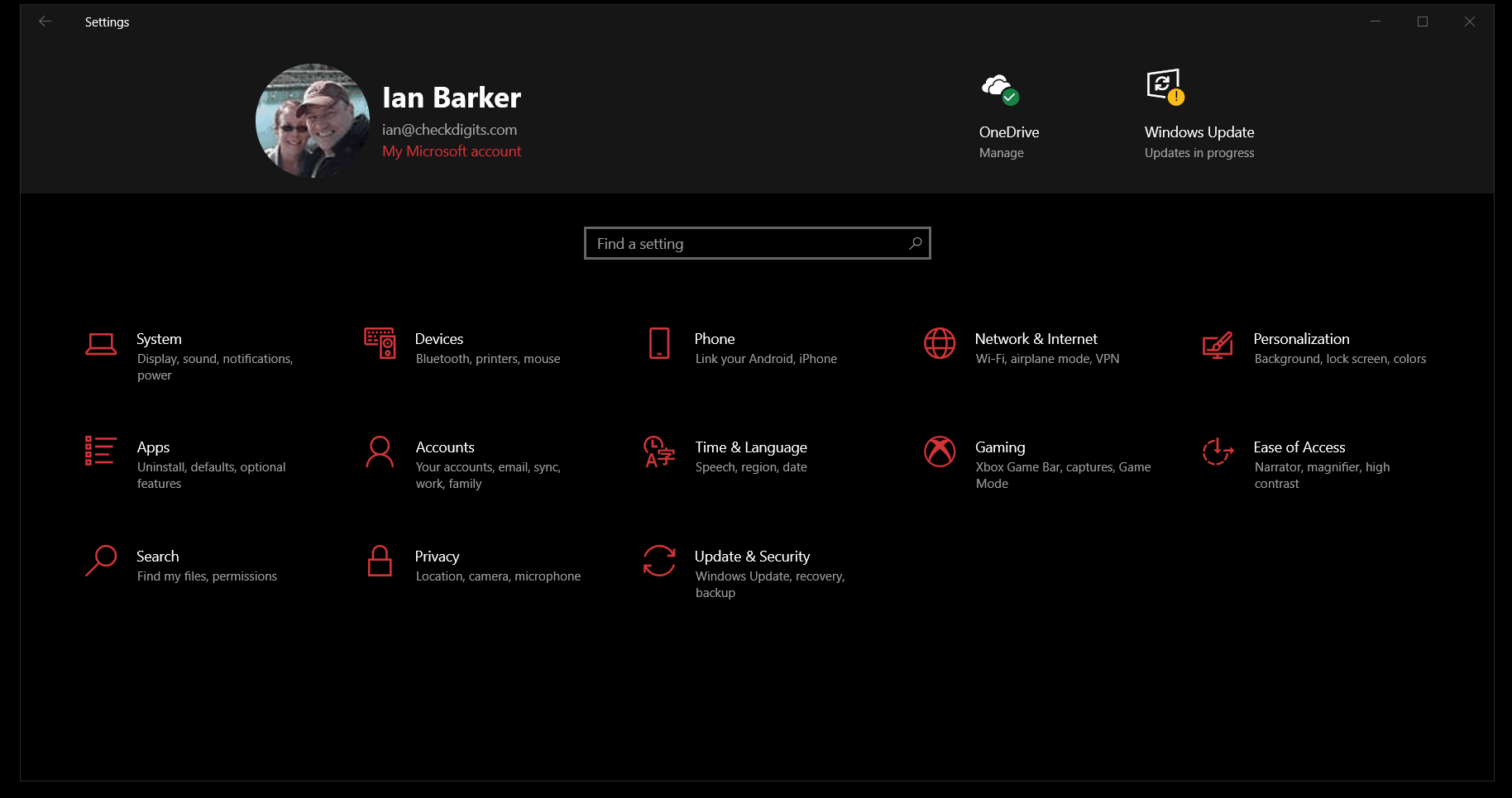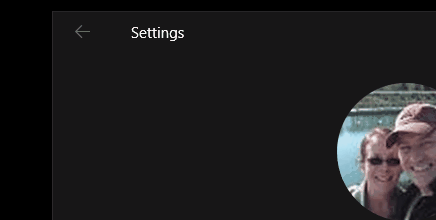I thought, given my past as a published poet, that I would at least use a more rare word in a title for a Delphi blog post I was prompted to produce and, with that, add some pseudo-pentameter look and feel. In short, having a little lyrical laugh, to show that density of prose and a divers or archaic choice of words does not always serve to promote clarity. To say more sometimes is to say less and by saying less I mean this to say you, who I choose to hope to help by writing will gain more when I write the right thing succinctly, without literary ornamentation and, I believe, even more is to be gained by you if I show you things, by streaming, either live or re-recorded so you can, should you elect, pause, rewind, stop, skip through any boring bits and get value from it in and of itself, as I, in my mind, perhaps in a folly of imagination, like to think you do.
What?
Those proceeding 170 words are a bit of a word spaghetti aren’t they? Here’s the thing (to be said in your mind like Adrian Monk) – I always, when I write on this blog and when I stream, strive to be clear and approachable. Not only that, I will try and be as honest as I can and show you code and techniques that are not fancy for the sake of being fancy – I want to show things that maybe you don’t know how to do (otherwise, what’s the point?) and will really help you, generally because they helped me.
With this in mind, August is going to be a little bit of a tsunami of me taking part in some streams. Texas is way too hot to go outside in August anyway so I may as well spend an extra amount of time scrunched over a clicky keyboard and putting my reputation at the mercy of several webinars. Ah, what could possibly go wrong? ?
Plus, it appears, that this brutal pandemic seems to be not quite ready to ride off into the sunset. Social distancing and the temporary interruption to what we’ve all previously thought is normal: going out, having a social life; even the simple pleasure of eating is curtailed – so we have a little more time on our hands to learn new things, myself included.
I really think Delphi is my super-power. If that sounds like a sales line, it’s not. If you watched the recent Fireside Chat session I had with Jim McKeeth you’ll hear me go into a lot more detail about what it is I do for a ‘day job’, my background and history as well as a few of my thoughts on Delphi and code in general. It’s that faith in the ability of Delphi to produce ROCK SOLID stable applications in a very short space of time using a language which has an elegance to it which totally clicks for me and has the power to Get Stuff Done that enthuses me to write things here and to take part in the webinars and so on.
So, all that said and done, what have I got planned for August?
On Wednesday 19th August…
How to give your apps the REALLY COOL Windows 10 Fluent UI look and feel with Delphi
(Note that I originally had planned this for 5th August but that proved to be too short notice).

Fluent UI is the new hotness. If you have a recent version of Windows 10 then you’ve surely noticed it by now. Buttons with very cool grad fills which follow the mouse as it hovers over them, icons which are either scaled vector graphics (SVGs) or are drawn from the epic Font Awesome set, plus a whole raft of other subtle and not so subtle gizmos like borders which add affordance to windows to help you spot which ones are active or inactive.

And I haven’t even mentioned the ‘acrylic’ look and feel where portions of your screen are semi-transparent and allow a portion of the background to show through, slightly blurred. It’s cooler than ice cold.
Fluent UI is, without doubt one of the best things to happen to Microsoft Windows in the past few years – and I’m going to show you how to do it, in Delphi. There will be a full blog post backing it up along with some sample code on GitHub.
Speaking of GitHub…
On Wednesday 12th August
Using Git source code control with Delphi and RAD Studio – all the reasons WHY and EVERYTHING you need to know

Over the past few months we MVPs have been canoodling together in our secret chat rooms and darkened corners of the web and we’ve come to realize something: there are a heck of a lot of people out there who either don’t use source code control or use it but have this horrible nagging doubt that they’re only using a tiny fraction of its capabilities.
It’s a common theme for people to say “I back everything up to an external hard drive”.
I live in Tornado Alley in Texas. In fact I’ve always lived in the most active tornado zones ever since I emigrated to the USA. Mother Nature can go from blazing hot sunny day to house destroying poop your pants F5 tornado in a very few short minutes here. That gives you a whole new perspective on whether or not your code is really backed up properly. Git and GitHub, GitLab, BitBucket or one of the many and multiplying git hosting services can make this sort of life-changing destruction less… terrifying… and, if you charge for your services, less likely for you to be sued.
But that said, the main point about Git is sharing code with others, controlling the chaos that occurs when you try that – there’s a reason why nearly all verbs to do with source code collaboration are aggressive: blame, force, commit (like a crime), pull (why not sync or combine?)
Rad Studio has all the things you need in it to use Git (and SVN but I’m going to focus on Git). I’m going to show you every single aspect of Git from the why to how to when. I’ll show you some very cool tools which will make the whole process a lot less painless. Git is notorious for being a little reticent to mere mortal programmers like you and I. I’m going to pull back the kimono a little in this webinar. Even Marco Cantu (who apart from being a Delphi legend is also a certified genius) said he was looking forward to the Git webinar. No pressure, Ian, no pressure! ?
and finally, Esther, we come to a webinar which we’re doing because so many people asked us to at a previous webinar…
On Wednesday 26th August
I’ll be co-hosting with TMS Product Evangelist Dr Holger Flick a webinar titled :-
Creating fully interactive web applications using Rad Studio, Delphi and TMS Web Core
If you’re a Delphi developer there are more than a few different ways of producing web apps. I’ve personally used the excellent Intraweb. I’ve also used Web Broker and Datasnap. However the thing which really clicked for me when I first came across it was Web Core from TMS Software.
Honestly, you pretty much write regular Delphi code, design the screens the way you would normally – and out pops a proper web app: HTML, CSS and JavaScript all ready to run on any web server. It can also produce Electron Apps as well as Progressive Web Apps (PWAs).
Holger will whizz through what TMS Web Core can do and show some excellent, easy to digest demos. He’s also got a few books available which will give you a leg up too should you need it.
So.. August…
All of these webinars will start at 11:00am CST, 4pm UTC, 5pm BST. You can check the times in your time zone via Embarcadero. I’ll update this blog post with the links when I have them.
I intend to write some fairly extensive blog posts to accompany the webinars. If you have any other ideas for Delphi-related subjects we could cover – let me know.
August is going to be an interesting time. Wait until you find out what’s planned for September!